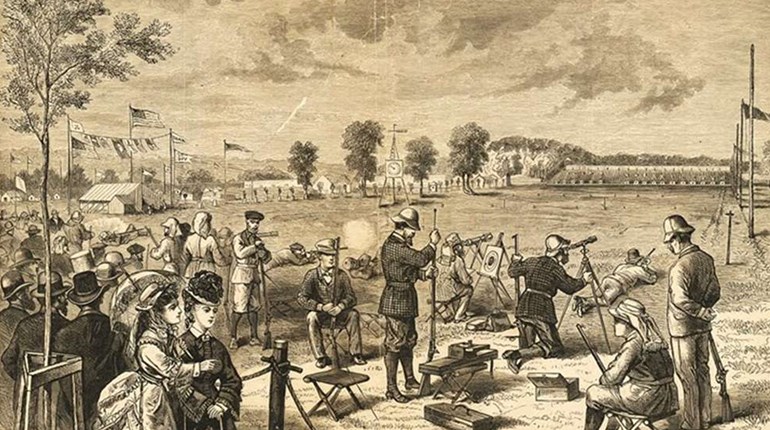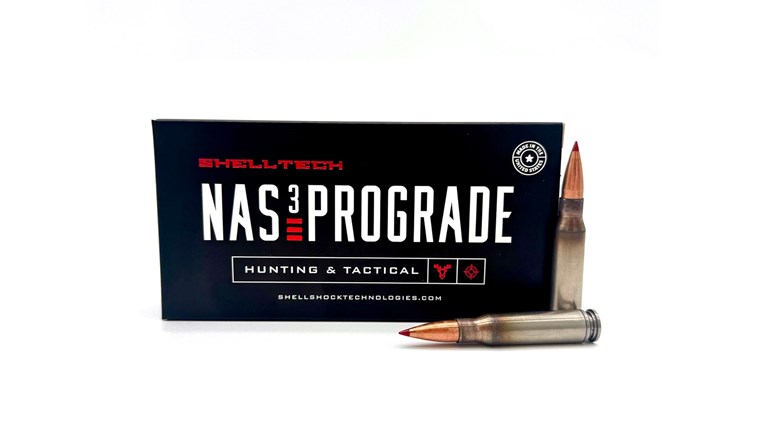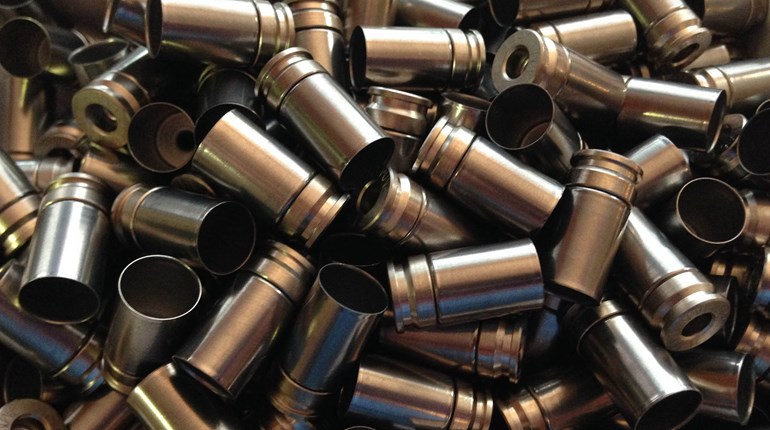

Now well into its second hundred years, it’s a little odd to think of 9 mm Luger as a “modern” cartridge. Yet when you look at all the continuing development effort focused on Georg Luger’s .355, there’s simply no denying he must have gotten an awful lot of things right. Otherwise, we’d have moved on as we have from so many other cartridges of the era.
We had the fun of helping introduce one of the most interesting of the recent innovations—and one likely to extend well beyond 9 mm—when we got an early peak at Shell Shock Technologies’ new cases in May. Now it seems to us an update is in order, and from our perspective we’d have to call the news all good.
Recollect all the advantages of the Shell Shock cases—vast case life (half the weight but twice the strength of brass, meaning 30 or more uses), incredibly small capacity variation (the initial test ammo we fired showed a 5 ft/sec gross velocity variation over our chrono, and even less over the really hotrod test suite at H.P. White Labs–3 ft./sec.), cool upon ejection (no “funny”—and dangerous—dance if a case wanders down a collar), magnetically retrievable (due to a stainless nickel alloy “upper” of the two-piece case), and colorable aluminum head (Like to be able to tell Major 9 from Minor on visual inspection? We would too!).
The newest generation of SST cases are even better than the originals: A slightly deeper primer pocket and chamfer means primers glide into place with noticeably greater ease. Though you’ll need a set of SST dies for NAS3 cases, think about it this way: They’ll run all your cases just fine, so when your banked brass cases do finally go, you’ll have nothing to adjust in your press and reloading process. Ever get a brass case stuck in your sizing die by peeling a weak rim? Well, banish that irritating process, too: To preserve the upper/lower joint in the SST cases, a spring-loaded mechanism pushes the resized case out of the die rather than pulling it.
We’ve loaded these with just about every 9 mm recipe we have without a hint of trouble so far. Stay tuned for a nuts-and-bolts-level report, but in the interim, here’s the best news of all: You’ll have to love your brass a lot to overlook the 15-40 percent cost advantage (and that’s without factoring in the 2-3x case life improvement and lower loss rate).

Visit Shell Shock Technologies at www.shellshocktechnologies.com.
Creedmoor/SST Ammunition
Quite apparently, others are liking what they see in the Shell Shock cases, too. Long associated with championship shooting at the highest levels, Creedmoor kindly sent us some of their SST-loaded +P ammo to test.
We grant our expectations were pretty high, given the source, but the performance held up in impressive fashion. Out of a small, short-barreled defensive gun (can’t spoil the upcoming review, now, can we?), we were able to routinely produce quarter-sized groups at seven yards. We think this is the limit of what the sight radius and our vision realistically allow, but this wasn’t what impressed us the most. We’ll back up just a little so the context is clear.
We’ve groused a little about +P lately, though not because there is anything wrong with such loadings. In and of themselves, they’re often impressive in terms of both reliability and accuracy. Their ample energy runs nearly any good-quality, +P-rated modern firearm with ease (especially PCCs), and their “top shelf” components—Hornady 124-grain XTP, in Creedmoor’s case—and QC all but assure defensive/protective utility. Which is great as far as it goes.
Where the cracks show is in learning to use a defensive arm well with such ammo. If you’re paying for your own, this is pretty much out the window when it’s a buck a pop or more—sometimes a lot more. We can’t in good conscience recommend ammunition that changes the feel and function of a defensive arm as much as +P often does when there is no practical way to train with that ammo.

That may be where the Creedmoor +P/SST combination really hits it out of the park. You won’t confuse the cost (or feel in recoil) of Creedmoor 124 JHPs with vanilla training ammo, but most shooters can now afford to give it a regular try. No more buying one tiny box, shooting a couple rounds while husbanding the rest for that “special” magazine, and essentially hoping it all actually works when it must.
Creedmoor’s SST-based ammunition will let you decide to stick with +P power—and the fight-stopping benefits it can provide—based on genuine knowledge of how your technique, firearm and composure hold up with top-quality defensive ammo. Not saying you’ll shoot it all the time, but you can shoot it regularly and improve or adjust your technique accordingly.
Bravo, Creedmoor.
Visit Creedmoor at www.creedmoorsports.com.
L-Tech/SST Ammunition
L-Tech Ammunition may not bring the visible sort of credentials to its SST-based offering that Creedmoor does, but ignoring their SST application looks, well, unwise to us. Maybe it will be more clear if we put it this way: While we can’t spill any beans, we know the U.S. military, a really top-tier gun manufacturer (reviewed by A1F Daily, just sayin’), and multiple law enforcement agencies think they’re onto something. Ergo we pay attention.
Their innovative 124-grain “Full Stop” solid copper hollow-point also tops a Shell Shock case, and depends on bullet architecture and materials—rather than merely an increase in kinetic energy—to achieve stopping power.

In many ways, it’s the flipside of the Creedmoor coin: Some guns—and many shooters—just aren’t good matches to steady +P diets, even when the economics are good. This is the reality of differing stature, differing firearms, and the capacity to manage both to best effect.
L-Tech’s Full-Stop ammunition is reassuring proof that another solution is a) possible, and b) means you won’t be out in the cold for defensive ammo if +P isn’t for you. Without resorting to elevated operating pressures—and their related recoil, flash and report—the L-Tech/SST combination gets within 8 percent or less of the power and velocity of three +P variants to which we compared it. If that doesn’t sound like much, it’s because it isn’t—and the objective difference is very small.
This apparently small difference is magnified as the size and weight of the firearm falls. In a duty-sized pistol, recoil “feels” about like what it is—10 percent less—though this impression is variable. When we put the L-Techs in very small 9 mms, however, the differences became striking.
In our SIG P320 Compact, +P rocks the shooter enough that activation of the slide lock is occasioned. Only a “buried thumb” amended this altogether. In a Glock 43, this phenomenon was reduced, but still present. Only an all-metal Kimber Micro 9 allowed us to avoid this on every shot, but there was a price to be paid: Subjectively, recoil was slightly more severe, and sight recovery slowest. None—not one—of these effects appeared with the L-Tech ammunition. In all three pistols, the L-Tech ammo was almost absurdly accurate. We think this is due to the very long bearing surface on the bullet itself. Barrel rifling has surface enough to create its full effect, and a deliberate pace will put shots literally on top of one another.
All in all, L-Tech Full-Stop deserves very serious consideration by anyone who wants accurate defensive 9 mm, but especially those who want to keep training and defensive shooting technique as close as possible.
L-Tech’s website is under construction. You can contact them in Eubank, Ky., at (606) 423-9782

































